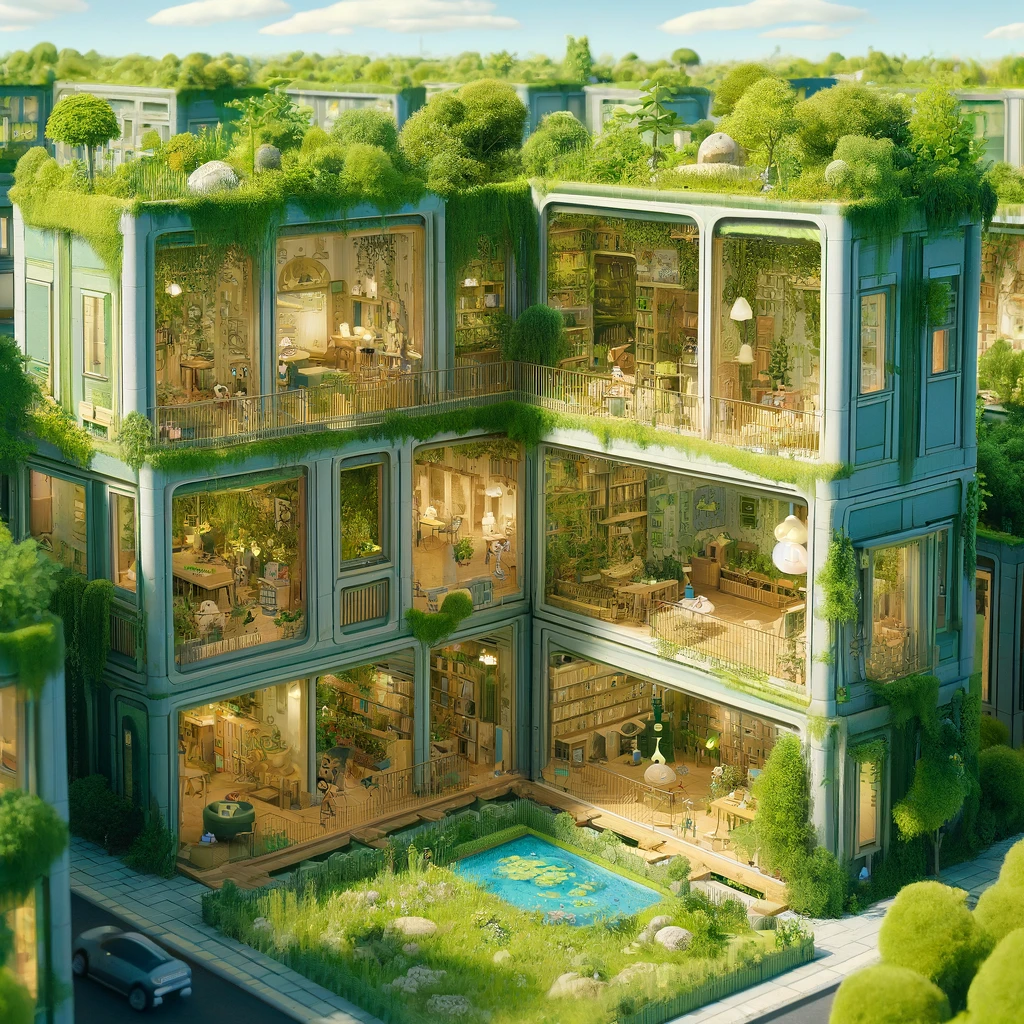Conclusion

The Urban Heat Island effect describes the process wherein urbanized areas experience higher temperatures than outlying areas due to structures such as buildings and roads. Our group concluded that this problem can be completed via the integration of biophilic elements into urban infrastructure; this implementation spans across several different disciplines, including physics, chemistry, biology, and computer science.
Environmental Science and Sustainable Urban Design
Urban areas, characterized by dense infrastructure and minimal vegetation, absorb and retain more heat compared to their rural counterparts. Materials like asphalt and concrete contribute significantly to this phenomenon due to their high thermal mass and low albedo. Sustainable urban design, incorporating elements like green roofs, urban parks, and water bodies, can significantly reduce ambient temperatures. These natural elements enhance evapotranspiration and provide shade, leading to cooler microclimates within urban centers. Furthermore, implementing biophilic designs that integrate greenery into urban landscapes not only helps in temperature regulation but also improves air quality and residents' well-being.
Physics of Solar Radiation and Thermal Resonance
Solar radiation and the albedo effect play crucial roles in the UHI effect. Dark, non-reflective surfaces in urban areas absorb more sunlight, converting it into heat, which is then released slowly, maintaining higher temperatures. By increasing the albedo of urban materials through the use of lighter colors or reflective coatings, cities can reflect more solar radiation and reduce heat absorption. Additionally, understanding thermal resonance and the properties of materials at a molecular level allows for the selection of construction materials that minimize heat retention.
Chemistry and Material Science
Chemically, the UHI effect is exacerbated by the presence of heat-absorbing materials and pollutants. Urban materials with high porosity, such as pervious concrete and porous pavements, can enhance evaporative cooling. These materials allow water to permeate and evaporate, effectively lowering surface temperatures. Moreover, reducing chemical pollutants and greenhouse gases through sustainable urban practices can further mitigate the UHI effect and improve overall air quality.
Biological Implications
The UHI effect has significant biological implications, affecting both human health and ecosystems. Higher urban temperatures can lead to heat-related illnesses and exacerbate conditions such as respiratory difficulties, particularly among vulnerable populations like the elderly and children. Prolonged growing seasons due to increased temperatures also disrupt ecological balances, affecting plant and animal life cycles. Implementing urban greenery can mitigate these impacts by providing cooling through shade and transpiration, and enhancing biodiversity.
Technological Solutions
Advancements in technology, particularly in the field of computer science, offer innovative solutions to address the UHI effect. Automated irrigation systems using microcontrollers, soil moisture sensors, relay modules, and water pumps can optimize the maintenance of urban greenery. These systems ensure plants receive adequate water, maintaining their cooling effect even in dense urban settings. Automation not only enhances the efficiency of urban gardening but also supports sustainable water management practices.
In conclusion, combating the urban heat island effect requires an interdisciplinary approach, combining sustainable design principles, advanced material science, biological insights, and technological innovations. By integrating these diverse strategies, cities can create cooler, healthier, and more sustainable urban environments, ultimately enhancing the quality of life for their inhabitants and promoting ecological balance.
Works Cited
- Heat Island impacts | US EPA. (2023, August 28). US EPA. https://www.epa.gov/heatislands/heat-island-impacts
- Learn about heat islands | US EPA. (2023, August 28). US EPA. https://www.epa.gov/heatislands/learn-about-heat-islands
- ITrees.com. (n.d.). iTrees.com. https://www.itrees.com/a/faq/tree-facts/urban-heat-islands-the-main-issues-and-what-is-being-done-to-combat-them
- Deziel, C. (2023, September 13). What is permeable pavement and how can it prevent flood damage? Family Handyman. https://www.familyhandyman.com/article/permeable-pavement/
- Irfeey, A. M. M., Chau, H., Sumaiya, M. M. F., Wai, C. Y., Muttil, N., & Jamei, E. (2023). Sustainable Mitigation Strategies for urban heat island effects in urban areas. Sustainability, 15(14), 10767. https://doi.org/10.3390/su151410767
- American Lung Association. (n.d.). Volatile organic compounds. https://www.lung.org/clean-air/indoor-air/indoor-air-pollutants/volatile-organic-compounds
- Education, U. C. F. S. (n.d.). Urban Heat Islands | Center for Science Education. UCAR. https://scied.ucar.edu/learning-zone/climate-change-impacts/urban-heat-islands